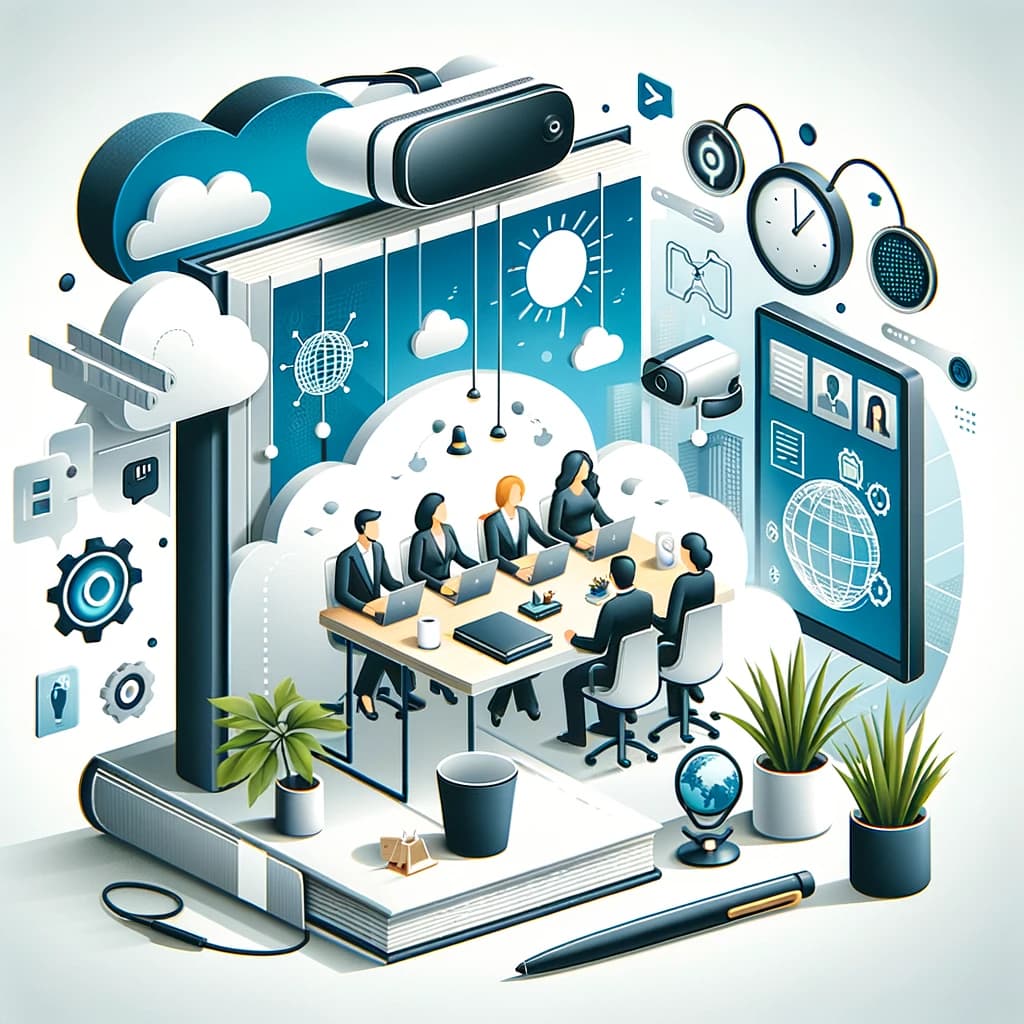Beyond Video Calls: The Future of Remote Collaboration

We at Arthur Technologies are hosting an event series on hybrid work and the role of technology. Following the success of our first event, The Future of Work: Embracing Hybrid Models at Scale, we hosted our second event as a LinkedIn Audio event titled "Beyond Video Calls: The Future of Remote Collaboration." This event delved deeper into leveraging modern collaboration tools to minimize meeting overload and email fatigue while enhancing team culture and productivity. Moderated by Nolan Ether and hosted by Ricky Houck, the session provided actionable insights and strategies for transforming remote collaboration.
Moving Beyond Video Calls and Email
Addressing Over-Reliance on Traditional Tools The pandemic accelerated the adoption of remote work, but it also highlighted the limitations of relying heavily on video calls and email. While these tools are essential, they can lead to fatigue and inefficiency when overused. Our session aimed to explore newer, more effective tools and methodologies to supplement traditional tools and enhance remote collaboration. Video conferencing, although vital, can be exhausting when used excessively. Common frustrations with video calls, such as Zoom fatigue and lack of engagement, have been cited by many. The session emphasized the importance of balancing video calls with other forms of communication to avoid burnout and maintain productivity. Practical tips for managing video calls were discussed, including scheduling buffers between meetings and setting clear expectations for camera use. These tips aim to reduce fatigue and make video meetings more effective. Email, a long-standing communication tool, can become overwhelming due to the sheer volume of messages. It’s often overused for internal communication, leading to cluttered inboxes and missed messages. Email was used as a prime example of an outdated tool that can no longer meet all the collaboration needs of modern, dynamic work environments. The session highlighted the need for more efficient communication tools that can reduce reliance on email.
Innovative Solutions for Remote Collaboration
Asynchronous Collaboration Tools
- Slack: A powerful tool for asynchronous communication, Slack allows teams to collaborate in real-time without the need for constant video meetings. It facilitates quick updates, sharing of documents, and integration with other tools to streamline workflows.
- MiroandMural: These digital whiteboard tools enable teams to brainstorm and visualize ideas collaboratively. They are excellent for creative sessions and planning, providing an interactive platform that mimics in-person whiteboard sessions.
Project Management Tools
- Trello,Jira, andAsana: These tools help manage projects and tasks efficiently. They offer visual project tracking, team collaboration, and integration with other tools to keep everyone on the same page.
- Notion: A versatile tool that combines note-taking, project management, and collaboration features. It allows teams to create databases, documents, and task lists in one unified platform.
Interactive and Engaging Platforms
- LoomandVidcast: The benefits of asynchronous video tools like Loom were discussed in detail. These tools allow for effective communication without the need for synchronous meetings, enabling team members to share detailed feedback and updates at their convenience. These tools offer a way to communicate complex ideas through video messages, reducing the need for synchronous meetings. They are particularly useful for providing feedback, onboarding, and sharing updates asynchronously.
- Slido: An interactive tool used for polling and gathering real-time feedback during meetings. It enhances engagement by allowing participants to vote on questions and share their opinions instantly.
The Future of Collaboration: Embracing Immersive Technologies
Virtual Reality (VR) and Augmented Reality (AR) Immersive technologies like VR and AR offer innovative solutions for remote collaboration. These technologies create a sense of presence and engagement that traditional tools cannot match. The session highlighted a study conducted by University of Münster with PWC, demonstrating that XR technologies significantly enhance collaboration and engagement compared to traditional video calls. The sense of presence and interactivity in virtual environments leads to more meaningful connections and productive meetings. Benefits of Immersive Technologies
- Enhanced Engagement : VR and AR create interactive environments where team members can collaborate in a shared virtual space. This significantly enhances engagement irrespective of the geographically dispersed nature of enterprise teams.
- Improved Productivity : Evolution of headset devices like the Meta Quest 3 and Apple Vision Pro offer advanced functionalities to software platforms which eventually enable a wide range of innovative use cases including collaboration and productivity on complex projects.
- Cost-Effective Solutions : Modern VR and AR technologies are becoming more affordable, making them accessible for businesses of all sizes. They provide scalable solutions for varying business needs including team meetings, training sessions, and collaborative projects.
The Evolution of XR The evolution and growing accessibility of XR technologies were discussed further, emphasizing how advancements in hardware and software have already made immersive collaboration beneficial and cost-effective for businesses. The session acknowledged that while traditional tools like videoconferencing and email are useful and there is a broad array of 2D tools that have improved remote work, there is still a need for immersive collaboration solutions. XR technologies were presented as a promising answer to this challenge, offering new ways for teams to innovate, connect and collaborate effectively.
Conclusion
Our second event in the series on hybrid work and the role of technology provided valuable insights into moving beyond traditional video calls and email to embrace innovative tools and technologies. By adopting asynchronous collaboration tools, project management platforms, and immersive technologies, companies can create more empathetic, dynamic, and productive work environments in times when some degree of hybrid work is slowly but surely becoming the norm. In our third event, we further explored the benefits of VR for enterprises and discussed specific use cases and industries where VR is making a significant impact. Check outthis blog postfor the summary and insights. In case you are curious to experience Arthur in action, register herefor the next Arthur event. FollowArthur Technologies on LinkedInfor regular updates and information about upcoming events.